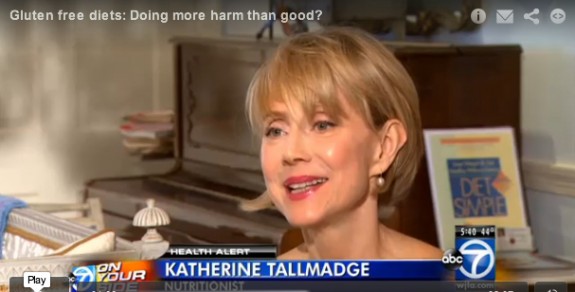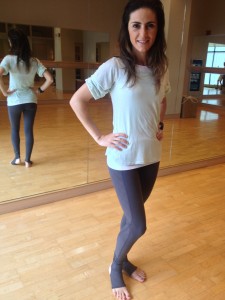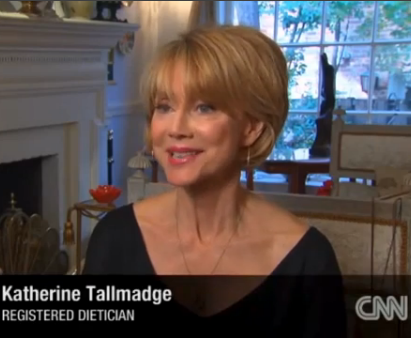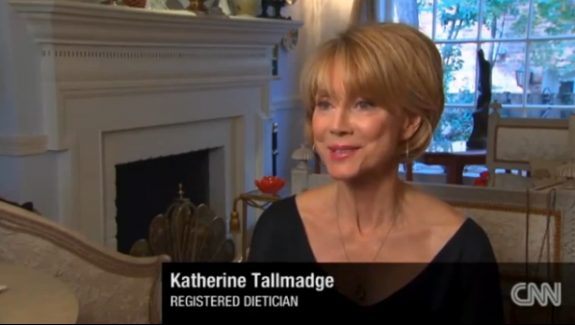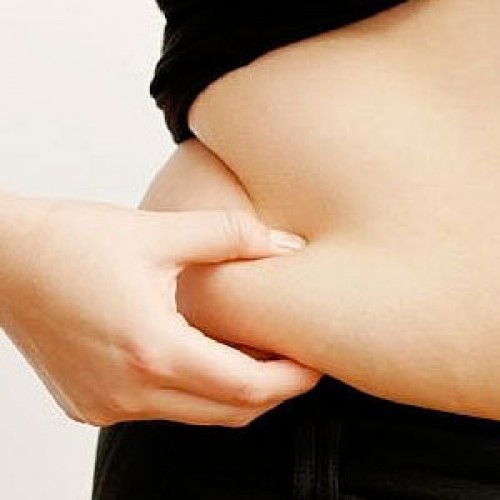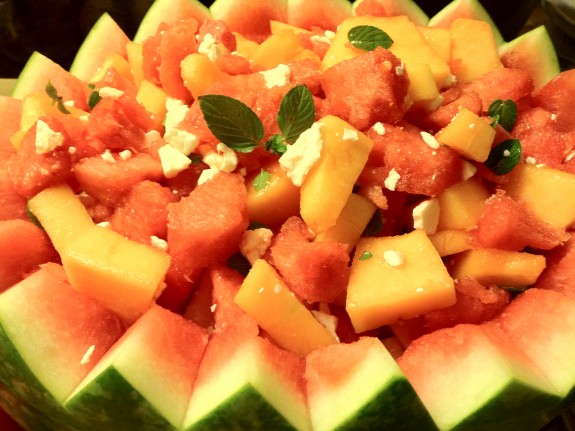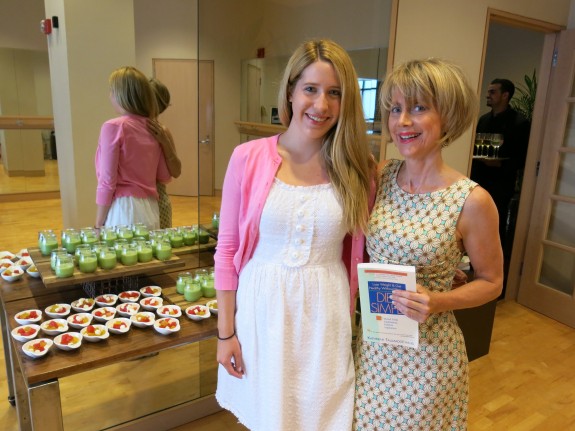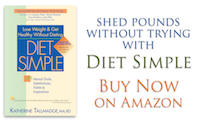The Gluten Free Craze
- At February 06, 2014
- By Katherine
- In Articles, News
 0
0
Do you need Gluten Free? 29% of Americans are trying to avoid gluten… Gluten free food has grown to a $4 billion industry
See me explain how a gluten-free diet may do more harm than good by clicking above or on ABC-7
This article appeared in The Huffington Post
Hear me – and three other experts – discuss “The Gluten-Free Craze” on National Public Radio’s The Diane Rehm Show.
It’s all the rage right now; in fact, you may be thinking of going on a gluten-free diet. Before you do, here are some things to think about:
First, you are likely to miss out on critical nutrients and health benefits only gained with gluten-containing whole grains (see below for the list). Most of those studies you’ve heard about proving the benefits of whole grains have used gluten-containing wheat, America’s (and the Mediterranean Diet’s) staple grain.
Second, a gluten-free diet is a therapeutic diet for those with debilitating celiac disease, a serious auto-immune disorder which virtually destroys the intestinal tract. But celiac only affects about 1% of the population.
Third, the danger of self-diagnosing and taking gluten out of your diet prematurely is that you will would never be able to get an accurate diagnosis of your symptoms. An intestinal biopsy is the only way to detect celiac definitively.
People try a gluten-free diet because they are overweight, feel tired, bloated, and/or depressed, and find reducing gluten correlates with feeling better or losing weight. But that is more likely because they’ve cut out excess calories found in many flour-based snack foods and sweets. They mistakenly attribute feeling better to taking out gluten.
Fourth, gluten-free diets can be seriously nutrient-deficient, low in fiber, iron, folate, niacin, thiamine, riboflavin, calcium, B12, phosphorus, and zinc. That’s because so many “gluten-free” products are made with refined, unenriched grains and starches, which contain plenty of calories, but very few vitamins and minerals.
The new $4 billion gluten-free industry is taking advantage of Americans’ desperation to feel better and lose weight. There has been an explosion of gluten-free junk foods, which has fueled this trend, and I hope you don’t become a victim.
But I have great news… many clients have thought they might need a gluten-free diet, but when we worked together at improving their nutrition and life balance, symptoms vanished! Perhaps that could be you? If you take the following steps and find you do need a gluten-free diet, it can fill all your nutritional requirements, but only if done CAREFULLY…
Do You Need A Gluten-Free Diet? A Step-by-Step Guide
1. Have a complete check-up with your family physician,
2. Consult with appropriate specialists, such as an allergist for wheat allergy and a gastroenterologist for celiac or another GI disease, A. If you have a wheat allergy, you must avoid wheat, but you do not have to avoid gluten from other grains, B. If you have celiac disease, you must avoid gluten – even the tiniest amounts (you must be eating gluten for the diagnosis to be made),
3. If you do not have a wheat allergy or celiac, visit a registered dietitian to verify that you are eating a balanced diet with plenty of nutrient-dense, naturally fiber-rich foods and adequate physical activity. A healthy diet and lifestyle reduces negative gastrointestinal symptoms, inflammation, boosts the immune system, improves brain function, reduces depression, and anxiety. If you are overweight, lose weight, as body fat can be toxic and produces hormones and pro-inflammatory chemicals which regulate metabolism, the immune system, inflammation, and the progression of artery hardening, so that when you have less body fat, you get many biological benefits, and feel better,
4. If symptoms persist, though in most cases they do not, you may be one of the rare people who are “gluten sensitive.” To confirm the diagnosis, and if a gluten-free diet is absolutely necessary for you – even though a gastroenterologist has verified you do not have celiac disease – visit your gastroenterologist, or the University of Maryland’s “Center for Celiac Research,” where they specialize in, among other things, detecting “gluten sensitivity,” which may be a newly identified disorder.
What is Gluten?
Gluten is a protein in wheat and some other grains, such as rye and barley. A gluten experiment in Food Science at the University of Maryland left a lasting impression on me about the function and importance of gluten. I kneaded bread dough under flowing water. As I kneaded the dough, the starch slowly washed away. What remained was a rubbery mass – the gluten – the protein in wheat which gives bread its structure.
Gluten-Containing Foods
Barley, Bulgur, Cereal Binding, Couscous, Durum, Einkorn, Emmer, Filler, Farro, Graham Flour, Kamut, Malt, Malt Extract, Malt Flavoring, Malt Syrup, Oats which are not labeled “Gluten-Free” because they have been contaminated by gluten in the field or in the processing plant, Rye, Semolina, Spelt, Triticale, Wheat, Wheat Bran, Wheat Germ, Wheat Starch, and others…
Naturally Gluten-Free Whole Grains
Eat these instead of buying processed “gluten free” foods.* Brown Rice, Whole Corn, Gluten-Free Oats, Millet, Teff, Sorghum, Wild Rice, Buckwheat, Amaranth, and Quinoa.*
Wheat Allergy
WA is an adverse immunologic reaction to wheat proteins, a classic food allergy affecting the skin, gastrointestinal tract or respiratory tract.**
Celiac Disease
CD is an immune-mediated enteropathy (intestinal disease) triggered by the ingestion of gluten in susceptible individuals. The onset of symptoms is usually gradual and characterized by a time lag of months or years after gluten introduction.**
Gluten Sensitivity
When both allergic (WA) and autoimmune mechanisms (CD) have been ruled out (diagnosis by exclusion criteria), individuals who experience distress when ingesting gluten may be considered as having GS, though there is no definitive test for this diagnosis and it has not yet been proven by science that it exhists.* *
** “Spectrum of gluten-related disorders: consensus on new nomenclature and classification,” BMC Medicine 2012, 10:13 doi:10.1186/1741-7015-10-13; Sapone, Bai, Ciacci, Dolinsek, Green, Hadjivassiliou, Kaukinen, Rostami, Sander, Schumann, Ullrich, Villalta, Volta, Catassi, Fasano.
It is critical that you are examined by a gastroenterologist before switching to a Gluten-Free diet. Why? Once you eliminate gluten, it is virtually impossible to diagnose celiac, and the diagnosis of celiac, an extremely serious auto-immune disorder, should be your primary concern.
My Favorite Gluten-Free Guides
“Gluten-Free Diet: A Comprehensive Resource Guide” by Shelley Case, R.D.*
“Easy Gluten-Free” by Tricia Thompson, M.S., R.D. and Marlisa Brown, M.S., R.D.*
“Gluten-Free, Hassle Free” by Marlisa Brown, R.D., C.D.E.*
Anyone giving gluten-free dietary advice should be a registered dietitian, and have the “R.D.” after their name.
Don’t forget, Diet Simple is filled with recipes, including some marked “Gluten-Free!”
Hear me – and three other experts – discuss “The Gluten-Free Craze” on National Public Radio’s “Diane Rehm Show”…
See me explain how a gluten-free diet may do more harm than good by clicking above or on ABC-7
This article appeared in The Huffington Post
Winterizing Your Workout Wardrobe
- At January 26, 2014
- By Katherine
- In Articles, News
 0
0
Are you a weather weenie? STOP! That may cause you to gain weight – and feel depressed for lack of sunshine – every winter. Too bad because you don’t have to. With the right clothing (and attitude) you can go outside and play in below freezing temperatures and feel as snug-as-a-bug-in-a -rug. Of course, as a Swede, I learned these tricks of the north long ago. My secret? If the weather is in the twenties or above, well-chosen layers, layers and more layers. Here’s what I mean:
Top and Bottom Layer 1: Tank top and leggings. These are from The Four Seasons Health Club, where I hold lectures and consult.
Top Layer 2: Add a short-sleeved t-shirt. This cotton t-shirt is from the Four Seasons Health Club.
Top Layer 3: Cotton turtleneck from The Gap.
Top Layer 4: A thick, warm hoodie from Athleta, Georgetown.
Bottom Layer 2 atop the leggings: Insulated leggings for men and women from Sportobin.com. These leggings are so soft and warm, you can stop here to protect your bottom half, no matter how cold.
In single digit weather, Top Layer 4: I wear a ski jacket atop the turtleneck and stop there! But in the twenties or above, if you are active walking or exercising, the layers are best, and the ski jacket will make you feel too hot, believe it or not.
Top Layer 5: Cashmere headband from Betsy Fisher, to cover my ears, and a wool scarf and mittens from The Gap. The addition of the Swedish hand-knit wool sweater is for when the weather is in the twenties and low thirties.
Essential: The right shoes for snow, ice and rain: Mephisto insulated, water-proof walking boots from Comfort One Shoe Store, Georgetown. Now I’m ready for my daily 3-mile walk from Georgetown to the Memorial Bridge and back. Gotta keep that body fat down!
Final Layer: A soft, warm robe in front of a roaring fire. This one from the Four Seasons Health Club. Ahhhhhhhh…
Baby, it’s cold outside! But with the right clothing you can go outside and enjoy!
Busted! Weight Loss Supplement Companies Sued for Diet Scams
- At January 12, 2014
- By Katherine
- In Articles, News
 1
1
Want thinner thighs by applying an almond-scented cream? How about eating all you want, yet losing weight by adding a powder to your food? Safe pills which cause weight loss?
Sounds good to me, too! But…
The weight loss industry is exploding with consumers spending $66 billion on weight loss products. Taking advantage of America’s obesity epidemic with false promises and lose-weight-quick schemes, supplement companies are raking in the dollars. I mean, who doesn’t want to lose weight with no effort? Watch my CNN interview on The Situation Room with Wolf Blitzer for the whole story…
Katherine’s Detox Diet: 7 Simple Steps
- At December 02, 2013
- By Katherine
- In Articles, News
 2
2

Email Katherine for your Personal Detox Diet and to Personally Coach You Through This Challenging Time of Year! Katherine@KatherineTallmadge.com
Living at a spa to lose 3 pounds in a week impractical? Okay, create a “Home Health Spa” by doing the following:
1. Minesweep for Calorie Bombs – Banish any “risky,” fattening or unhealthy foods from the house,
2. Control Your Environment – Stock your home (and office) with delicious, healthy foods, such as the batch recipes from Diet Simple, and Diet Simple Farm to Table, and piles of clean, chopped, ready-to-grab fruit and veggie dishes and snacks, with delicious dips
3. Hit the Ground Running – Start Every Day with Physical Activity. Don’t even think about it! Before checking email, taking phone calls, or applying make-up (I know – I’m horrible!), get out the door for a walk, jump on your home treadmill, go to bootcamp or to the gym. Diet Simple gives you creative ways to increase your physical activity or email Katherine if you need personalized coaching.
4. Eat Breakfast Every Morning – Preferably at home, so you’re not tempted by the bagel-the-size-of-your-head at the office. Skimping on breakfast usually backfires and causes over-eating later. Diet Simple is filled with enticing breakfast ideas … or email Katherine to help you discover that perfect breakfast which will help you control your appetite every day.
5. Eat Light at Night – Soup is ideal for feeling satisfied with fewer calories so you don’t go to bed feeling too full. Wake up hungry for a good breakfast in the morning, Diet Simple and Diet Simple Farm to Table are filled with delicious soup ideas…
6. Eat plenty of yogurt – a Harvard study found people who ate yogurt regularly had lower body weights. A more recent study showed when the bacteria in your gastrointestinal tract improves – which is caused by the probiotics in yogurt – it may help you lose weight. I actually have clients who lose weight more quickly and effectively when they include daily yogurt in their diet,
7. Sleep at least 7 to 8 Hours – Sleep disturbances are correlated with weight problems,
8. It Takes A Village – Spend your time with like-minded people and avoid people who will sabotage your goals. This is an important feature of being at a spa which makes it so easy. If your spouse or friends are not on board, it will be difficult to stick with any plan. In Diet Simple, Katherine gives you ideas for handling the people in your life. Or, email Katherine for Personalized Coaching.
The Battle of the Bulge is Won at the Margins. Sweeping Dietary Overhauls are Impractical and Don’t Work Over Time!
Katherine’s Detox Diet to Lose Weight Fast
1. Eat your large, balanced – delicious – breakfast you’ll enjoy (examples in Diet Simple) comprising at least 1/3 of your day’s calories
2. Add a Veggie Soup Before Each Lunch and Dinner. Katherine’s “Cleansing” Veggie Soup
3. At Lunch and Dinner, eat only lean proteins, fruits and veggies (Yogurt, fruits and veggies are UNLIMITED) until you lose your desired weight!
4. You must build up to at least 12,000 steps per day average, or email Katherine to find creative ways to burn those calories!
This may not be considered a genuine “detoxifying cleanse” but that’s good! It contains real food you can actually chew…Delicious, satisfying, loaded with nutrients and naturally fiber-rich, for natural “cleansing!”
Email Katherine for Your Personalized Detox Diet Plan. Custom-Designing Your Diet Makes Everything Easier and More Enjoyable!
Six Slimming Strategies for Surviving the Holidays Without the Bloat
- At December 02, 2013
- By Katherine
- In Articles, News
 0
0

Email Katherine to Speak on These Fascinating Topics at Your Organization's December Seminars & Conferences Katherine@KatherineTallmadge.com
Holidays are a time for celebrating life and for bringing families together. They also mean many opportunities for socializing, over-eating and drinking. Remember, the “holidays” are only 3 days, not every day between Thanksgiving and New Years! And, isn’t looking and feeling your best your priority? How about the praises from friends and family you haven’t seen since last year? Or even your doctor, who is thrilled with your improved health and blood test results…
Overcoming the 6 Saboteurs with Katherine’s 6 Slimming Strategies for Surviving the Holidays Without the Bloat
1. Variety: It is the single most important factor determining how much you eat. Variety? Think about it: You’re at a party where there are seven types of cookies on the table. How many will you have? One of each? Maybe a few more of your favorite? What if there were only one type of cookie? You’d have one, maybe two at the most. When there are three pies on the holiday table – pumpkin, apple and pecan, won’t you have a slice of each? What if there were only one type of pie, say, apple? Wouldn’t you just have one slice?
Why? Studies show our instinct for variety evolved over millions of years so that we would get enough nutrients to survive. But today, because we are exposed to a variety of fattening foods – especially at restaurants, buffets, or parties – variety is a significant factor contributing to overeating and the obesity epidemic.
Bottom Line: How can you use variety to lose weight? Serve a variety of healthy foods to yourself and your family, have them accessible, ready-to-eat. Would you prefer a bowl of sliced apples or a fruit salad with a variety of fruits? Why do we love salad bars so much? Because there is a beautiful array of colors, flavors, textures and shapes from which to choose. Diet Simple’s menu plans are filled with variety to help you stay on your plan and lose weight. Having trouble? Email Katherine for Personalized Coaching...
2. Volume…Eating more to eat less: As long as the volume of the food is high, people can feel full with fewer calories. In one study, researchers varied the amount of water in a food eaten as a first course and found subjects who ate soup before a meal consumed 26 percent fewer calories at the main course. In another study, the researchers served salads before a main course, and found people ate about 100 calories fewer at the following meal.
Why? A large food volume caused by water incorporated into the food – as in vegetables, fruits and soups – even without added calories, improves your feelings of fullness in a variety of ways. (1) It causes stomach stretching and slows stomach emptying, stimulating the nerves and hormones that signal feelings of fullness, (2) Visually seeing a large volume of food can increase your ability to feel satisfied by it, and (3) The larger a meal and the longer a meal goes on, you lose interest in completing it. Water in food keeps calories low and has the largest influence on how much you eat. These studies show eating a high-water-content, low-calorie first course enhances satiety and reduces calorie intake at the next course.
Bottom Line: If you eat a low calorie soup or salad before every meal, you could save 200 calories daily and lose 20 pounds in a year with this simple change alone. Diet Simple, and Diet Simple Farm to Table are filled with delicious soup and salad recipes you and your family will love. Having trouble? Email Katherine for Personalized Coaching..
Find out how Simple, Sumptuous Soups can Speed Up Your Weight Loss…
3. Serving Size: Simply the amount of food you are served will affect how full you feel and how much you eat. When people are served varying amounts of the same food, they will feel satisfied with the smaller portion. But when served more, they eat more without realizing it, sometimes 300 to 800 more calories. If the effect persists beyond two days, those extra calories, added daily over the course of a year, would pack on 30 to 80 pounds in one year.
Why? We humans find portion size difficult to judge, and don’t adjust our intake. Also people tend to eat in units. If we’re given a bag or a portion of something, there’s a compulsion to finish it, especially if it’s a tasty, high calorie food. So, when served larger portions, we adjust our level of satiety to accommodate greater calorie intakes. Fortunately, studies have also found that the reverse is true.
Bottom Line: Control the food that is put in front of you. When good-tasting, lower-calorie foods or portion-controlled meals are available, we will eat those and feel just as satisfied. If that saves 300 calories at lunch and dinner – that’s 60 pounds lost in one year. Diet Simple, and Diet Simple Farm to Table are filled with wonderful ideas and recipes to help you stay on your program. Having trouble? Email Katherine for Personalized Coaching…
4. Food Pushers: To be fair, “food pushers,” as I call them, aren’t necessarily bad people. Your mom, your spouse, your friends-they just want to please you. They are people who think they have your best interests at heart. My clients and I have tried various tactics through the years, most of them utter failures. I’ve tried explaining that I wasn’t hungry. I even went through a phase of telling people I was allergic to this or that. That didn’t work, either. And I learned that the worst thing you can say to a food pusher is, “No thanks, I’m on a diet” or “Thanks, I’m watching it.”
Why? You might as well say, “Talk me into it!” (1) Your excuse is giving the food pusher a double signal – that you really want it but have to refuse, (2) It might also sound insulting, implying that the food isn’t good enough for your refined tastes, (3) And finally your response might make the pusher feel guilty, as if he or she should be “watching it,” too. All of these things challenge the food pusher to seduce you.
Bottom Line: I finally began to make headway when I learned the most basic rule of all: Never give excuses. I’m delighted to say that one of the foremost authorities on etiquette told me that this approach is both appropriate and wise. “The best answer is a simple but firm ‘No thank you,'” declared Judith Martin, the syndicated columnist who writes as Miss Manners. “Once you give an excuse, you open yourself to argument.” Save at least 200 calories per day by saying “No thank you” to your food pusher and lose 20 pounds in one year! Katherine shares many ideas for handling food pushers in Diet Simple. Having trouble? Email Katherine for Personalized Coaching...
5. Sweets: are everywhere during the holidays. People have an inborn attraction to sweets. If you don’t believe it, simply watch an infant’s response to something sweet versus, say, a vegetable. There’s an automatic acceptance, even joy, after eating something sweet. On the other hand, vegetables are an acquired taste, which may take 10 – 20 tries before acceptance.
Why? This is partly explained by evolution. We’ve been eating naturally sweet foods such as breast milk and fruit for millions of years. They contain life-sustaining nutrients, and a love for those foods helped keep us alive. Also, during evolution, an attraction to scarce calorie-dense foods, such as sweets and fats, improved our chances for survival.
Bottom Line: Because we have a natural urge for sweets, include something naturally sweet at every meal, such as fruit (remember the importance of variety?). My clients who try this find their cravings for high calorie, super-sweet foods reduce. Another strategy would be to go ahead and eat a tiny sweet each day, say, 10% of your daily calories. Or, splurge once a week on a large dessert. Eat a 150 calorie treat instead of a 300 calorie treat daily and lose 15 pounds in a year! In Diet Simple, Katherine has many ideas for having your sweets and eating them too! Having trouble? Email Katherine for Personalized Coaching…
Learn more about sweets, the science behind our sweet cravings and strategies for coping.
6. Physical Activity: Simply put, during the holidays you’re so busy, you may feel you have less time to exercise. This is why I and all my clients wear pedometers, a tiny device which measure your steps. We find the pedometer encourages us to walk just a little more here and there.
Bottom Line: Just 2,000 steps – or one mile – more per day (only 15 to 20 minutes) will burn about 100 to 200 more calories and that saves 10 to 20 pounds in a year! In Diet Simple, Katherine gives you many creative ways to increase your physical activity – to fit your unique needs for weight loss – so you barely notice you’re exercising! Having trouble? Email Katherine for Personalized Coaching…
4 Surprising Strategies for Reducing Sweets’ Addictive Hold on You
- At November 20, 2013
- By Katherine
- In Articles, News
 0
0
Click the video above or watch on CNN
Our attraction to sweets is primal. We’ve been attracted to sweets for millions of years. During our evolution, sweet foods kept us alive: breast milk, fruit, which are also relatively concentrated calorie sources, got us through regular famines and kept us alive. We are descended from those survivors!
Sweets light up the pleasure centers of our brain, similar to addictive substances. Have you ever noticed, the more sweets you eat, the more you crave? Are you more attracted to sweets during certain times of the year?
With the holidays looming, clients are streaming in desperately worried about how to handle their sweet cravings and prevent the predictable five to ten pound weight gain over the holiday season. Watch my CNN video (above) for 4 surprising strategies to reduce sweets’ addictive hold on you. And, believe it or not, you can have your sweets and eat them too! For more detailed information on sweets and cravings, read the article on my blog, originally published in The Washington Post, with updates in my more recent articles in Livescience.com and The Huffington Post.
And please visit me for personalized coaching this holiday season… Or, invite me to give a presentation to your organization…
Sleep Clears the Brain of Toxins
- At October 18, 2013
- By Katherine
- In Articles, News
 0
0
BRAIN MAY FLUSH OUT TOXINS DURING SLEEP
An NIH-funded study suggests sleep clears the brain of damaging molecules associated with neurodegeneration. A good night’s rest may literally clear the mind. Using mice, researchers showed for the first time that the space between brain cells may increase during sleep, allowing the brain to flush out toxins that build up during waking hours. These results suggest a new role for sleep in health and disease. The study was funded by the National Institute of Neurological Disorders and Stroke (NINDS), part of the NIH.
“Sleep changes the cellular structure of the brain. It appears to be a completely different state,” said Maiken Nedergaard, M.D., D.M.Sc., co-director of the Center for Translational Neuromedicine at the University of Rochester Medical Center in New York, and a leader of the study.
For centuries, scientists and philosophers have wondered why people sleep and how it affects the brain. Only recently have scientists shown that sleep is important for storing memories. In this study, Dr. Nedergaard and her colleagues unexpectedly found that sleep may be also be the period when the brain cleanses itself of toxic molecules.
Their results, published in Science, show that during sleep a plumbing system called the glymphatic system may open, letting fluid flow rapidly through the brain. Dr. Nedergaard’s lab recently discovered the glymphatic system helps control the flow of cerebrospinal fluid (CSF), a clear liquid surrounding the brain and spinal cord.
“It’s as if Dr. Nedergaard and her colleagues have uncovered a network of hidden caves and these exciting results highlight the potential importance of the network in normal brain function,” said Roderick Corriveau, Ph.D., a program director at NINDS.
Initially the researchers studied the system by injecting dye into the CSF of mice and watching it flow through their brains while simultaneously monitoring electrical brain activity. The dye flowed rapidly when the mice were unconscious, either asleep or anesthetized. In contrast, the dye barely flowed when the same mice were awake.
“We were surprised by how little flow there was into the brain when the mice were awake,” said Dr. Nedergaard. “It suggested that the space between brain cells changed greatly between conscious and unconscious states.”
To test this idea, the researchers inserted electrodes into the brain to directly measure the space between brain cells. They found that the space inside the brains increased by 60 percent when the mice were asleep or anesthetized.
“These are some dramatic changes in extracellular space,” said Charles Nicholson, Ph.D., a professor at New York University’s Langone Medical Center and an expert in measuring the dynamics of brain fluid flow and how it influences nerve cell communication.
Certain brain cells, called glia, control flow through the glymphatic system by shrinking or swelling. Noradrenaline is an arousing hormone that is also known to control cell volume. Similar to using anesthesia, treating awake mice with drugs that block noradrenaline induced unconsciousness and increased brain fluid flow and the space between cells, further supporting the link between the glymphatic system and consciousness.
Previous studies suggest that toxic molecules involved in neurodegenerative disorders accumulate in the space between brain cells. In this study, the researchers tested whether the glymphatic system controls this by injecting mice with labeled beta-amyloid, a protein associated with Alzheimer’s disease, and measuring how long it lasted in their brains when they were asleep or awake. Beta-amyloid disappeared faster in mice brains when the mice were asleep, suggesting sleep normally clears toxic molecules from the brain.
“These results may have broad implications for multiple neurological disorders,” said Jim Koenig, Ph.D., a program director at NINDS. “This means the cells regulating the glymphatic system may be new targets for treating a range of disorders.”
The results may also highlight the importance of sleep.
“We need sleep. It cleans up the brain,” said Dr. Nedergaard.
BODY FAT – It’s Not Just A Matter Of Appearance
- At October 07, 2013
- By Katherine
- In Articles, News
 0
0
Body Fat – It’s Not Just A Matter Of Appearances
It Can Also Be Toxic
We used to think that body fat was inert. But new research has found that fat tissue produces toxic chemicals, causing inflammation, oxidation, insulin resistance, and cancer-promoting cell growth caused by an increased level of “growth factors.” These chemicals circulate through the body and correlate with many cancers (including aggressive prostate, breast, and colon cancers), heart disease, diabetes, arthritis, muscle weakness, bone loss and other disastrous conditions. Why? But, more importantly:
But, Take Heart! Even if you’re overweight, there are many things you can do to improve your odds of avoiding these diseases! Read on…
Inflammation
Inflammation, caused by excess body fat among other things, contributes to illnesses which are chronic, costly, and corrode our quality of life. Inflammation is a silent killer. You don’t see it or even feel it until after many years when it blossoms into full-blown diseases, such as heart disease, cancer, Alzheimer’s, arthritis, muscle weakness or bone loss.
How could inflammation contribute to so many seemingly unrelated illnesses? Inflammation is your natural defense against disease-causing pathogens and it can happen anywhere in your body. When you cut your finger and it becomes red, swollen and painful, that’s inflammation at work. It’s your body’s way of fighting infection and it’s a lifesaver. Once healing begins, inflammation ceases and the body resumes normal functioning. But that immune response – which is constantly on patrol preventing diseases throughout our body, in our blood vessels and organs – can be a double-edged sword. Sometimes, it doesn’t shut down and inflammation becomes chronic. In the blood vessels, inflammation causes fatty plaque to rupture, form blood clots and leads to heart attack or stroke.
Inflammation may also contribute to insulin resistance, a precursor to diabetes. And emerging research is finding that inflammation may produce genetic mutations which cause and spread cancer. It’s even a culprit in weakening muscular strength and reducing bone mass as we age. There is also evidence that in the brain, inflammation attacks nerve cells, and may contribute to dementia and Alzheimer’s disease. The cause of chronic inflammation can be genetic or environmental. Scientists have found that excess body fat, a sedentary lifestyle, eating a poor diet, smoking, and high blood pressure, all increase various inflammatory biomarkers and contribute to chronic inflammation and disease.
Your doctor may be able to measure your level of inflammation with a test measuring your blood’s “C-Reactive Protein” or CRP.
Oxidation
What exactly is oxidation? Oxidation, caused by excess body fat among other things, is similar to rusting. An example of oxidation is an apple slice turning brown when exposed to air (oxygen). But simply adding lemon or any citrus juice, an antioxidant, keeps the apple’s flesh fresh, and prevents the browning or oxidation from occurring. Our bodies are constantly “rusting” or experiencing oxidation. Oxidation is responsible for many of the conditions of aging including, but not limited to, heart disease, cancer, arthritis, bone loss, muscle weakness, neurological impairments affecting cognition and balance.
Oxidation is constantly occurring in your cells due to excess body fat, unhealthy diets, environmental pollutants, smoking, the sun, the heat generated through basic metabolic functioning/digestion, and other factors. It takes a large supply of antioxidant-rich foods, and regular amounts at every meal, to counter this.
High Glucose and Insulin
Excess body fat causes high glucose and insulin in your blood stream. High glucose has serious consequences for your cardiovascular system, can lead to blindness, kidney disease, impotence, and is a precurser to diabetes. High insulin levels are associated with heart attack and colon cancer, uncontrolled cell growth and their “growth factors” contributing to various cancers and other diseases.
What To Do About Body Fat?
Exercise Type: Many people believe that a hard work-out in the gym will lead to weight loss: NOT! I have so many clients who have done this for years and their fat hasn’t budged. You’ve seen them in the gym yourself: People who’ve come in year after year after year, and they’re still as overweight now as they were when they started. I know it’s frustrating. Just ask Joe, Elizabeth and Grace. They’re major athletes. Elizabeth is a champion rower, Grace is close to being a pro tennis player, and Joe “works out more intensely than men half his age!” So, what gives?
While strength training and yoga are wonderful for your body and mind, they do very little toward losing weight, no matter how hard your workout is. You need cardiovascular exercise – simply moving – to lower body fat. What do I mean by moving? Walking is ideal! Yes, simply walking. I and all my clients use pedometers to determine if we’re getting enough cardiovascular activity, or walking, daily.
My goal for weight and health maintenance is about 10,000 steps daily (average). That’s about 5 miles or 1.5 hours accumulated through the day. If you want to lose weight, usually it takes about 12,000 steps. If you’re in a hurry to lose weight, or want to get off – or lower – medications for high blood pressure, high cholesterol, or diabetes, try 15,000 steps per day (average). It will transform your health and your life! Just ask Joe, Elizabeth and Grace – who have lost body fat for the first time in years – and are now true believers in simply WALKING!
Are YOU dangerouly overweight? Find out with my 8 simple steps…
Minimizing the Damage if You Are Overweight
Cardiovascular activity seems to be, by all accounts, the fountain of youth! It naturally clears glucose from your bloodstream and that keeps insulin levels low. It lowers blood pressure, clears fat and bad cholesterol quickly and efficiently after meals, and increases good cholesterol, thus reducing your risk for heart disease. People who are more active have less disease and live longer. Although obesity increases the risk for insulin resistance and type II diabetes, a study reported in the Annals of Internal Medicine showed that cardiovascularly fit obese people with a BMI above 27 cut their diabetes rate in half. The study showed even obese people received an independent effect from exercise.
Nutrition: Eat plenty of antioxidant-rich and ant-inflammatory foods. Eat in a way which minimizes blood sugar and insulin spikes, and cholesterol clogging your arteries.
To accomplish this, eat more…
Antioxidant-Rich and Anti-Inflammatory Foods: Plant foods such as fruits, vegetables, legumes, and whole grains should be eaten at each meal to counteract the negative effects of oxidation and inflammation. Berries and Deep Green Leafy Vegetables have been found to have some of the highest antioxidant scores of all fruits and vegetables. But every fruit and vegetable will provide healthy anti-oxidants and health benefits. Supplement your diet with nuts, fresh olive oil, tea, and consistent, small amounts of alcohol.
Anti-inflammatory Foods, such as…
Fish: The omega 3 fatty acids, DHA and EPA, found in fish, are the compounds most consistently found to reduce inflammation. It’s been confirmed in large observational studies as well as controlled clinical intervention trials that fish and fish oil reduce heart disease by decreasing inflammation, arrhythmia, blood clotting, CRP and other inflammatory markers. High fish diets have also been found to reduce the incidence of Alzheimer’s and dementia. Marine-derived omega-3’s may also reduce cancer risk, arthritis, asthma, psoriasis, and other inflammatory diseases.
Flax Seeds and Walnuts: New research has found that the plant version of omega-3 fatty acids, ALA, found in flax seeds, walnuts, and canola oil reduce inflammation. A clinical intervention study published in the Journal of Nutrition found ALA reduces multiple cardiovascular disease risk factors, including the reduction of CRP and other inflammatory markers. The researchers also found that as CRP lowered, good (HDL) cholesterol increased, a double benefit and an added protection from heart disease.
Vitamins E and C-rich foods: A study found that supplementation with vitamins E and C reduced inflammatory markers and improved asthma, an inflammatory condition, in children. Vitamin E is high in nuts, seeds, and oils, especially wheat germ oil, sunflower seeds, and almonds. Vitamin C is high in fruits and vegetables, especially strawberries, oranges, cantaloupe, tomato juice, mangos, cauliflower, broccoli and sweet potatoes. Another study published in the Journal of Nutrition found that when people ate regular doses of vegetable soup causing high vitamin C levels in their blood, biomarkers of inflammation decreased.
Fruits and Vegetables: Food high in antioxidants play an important anti-inflammatory role since oxidation is part of the inflammatory process. Studies show people who eat diets low in antioxidants – that is, low in fruits and vegetables – have more inflammatory diseases, like heart disease, cancer, rheumatoid arthritis, dementia and Alzheimer’s.
The Mediterranean Diet: A study published in the Journal of the American Medical Association found that people eating a Mediterranean style diet had significantly reduced CRP and other inflammatory biomarkers. They also had reduced insulin resistance, a precursor to diabetes. The Mediterranean diet group ate at least nine to eleven ounces of fruit, four to six ounces of vegetables, one to two ounces of walnuts, 14 ounces of whole grains or legumes daily, and increased their consumption of olive oil. While the control group ate the same level of carbohydrates, protein and fat, they didn’t eat as much complex carbohydrates, fiber or olive oil and ate more saturated fat and cholesterol.
Vegetarian Diets: A study published in the Journal of Nutrition found that long term vegetarians had markedly lower CRP levels (and their blood vitamin C levels were higher).
Eat less…
Reducing refined sugar, sweets and flour will help reduce blood sugar and insulin
Red meat and processed meats are correlated with heart disease and various cancers. New research shows this may be related to its disruptive effects in the microbiome, the bacterial environment of the gastrointestinal tract, which can make our break our health.
Additional Behaviors for Minimizing the Damage of Being Overweight
Keep calories at low but healthy levels while still feeling full (in Diet Simple you can determine your personalized calorie needs). Increase consumption of high- fiber, high-water- containing, nutrient- dense, low-calorie foods such as fruits, vegetables, whole grains and legumes. Reduce consumption of nutrient-poor, calorie- dense processed and refined foods such as chips, crackers and sweets.
Overall Calorie Reduction: Calorie restriction reduces oxidation, a contributor to inflammation. Calorie restriction also reduces inflammatory markers.
Ideally, Lose Body Fat. It will reduce oxidation, inflammation, negative hormone levels, cancer-promoting growth factors and cell proliferation. Most scientists will agree that weight loss is probably the most effective way to reduce inflammation, oxidation and cancer-promoting cellular proliferation. We used to believe that body fat was inert. But new research has found that adipose tissue produces pro-inflammatory compounds which may help explain why obesity is correlated with heart disease, cancer, arthritis, and other inflammatory diseases.
Preventing Prostate Cancer Through Diet and Lifestyle
- At October 03, 2013
- By Katherine
- In Articles, News
 1
1
Nutrition makes a difference!
by Viggy Parr with contributions by Katherine Tallmadge
When men move to the United States or adopt a more westernized diet, their prostate cancer rates increase dramatically.
Based on international comparisons of prostate cancer rates in different countries and over time, studies where researchers examine the lifestyle and health of a group in one location and compare that to the lifestyle and health of a group in a different location—have shown that Asian men, who have some of the lowest worldwide rates of prostate cancer, increase their risk of that cancer when they adopt a Western (American) diet with more animal foods. A recent study (Ahmedin et al, 2010) found that rates of prostate cancer are rising in countries with formerly low rates, such as Japan and Singapore because of westernization, including a sedentary lifestyle, diets filled with animal fats, and rising rates of obesity. These results prove that there is not necessarily a genetic protection against prostate cancer in Asian men, but rather a strong environmental factor.
I hope that the following lifestyle advice can benefit all men and help them to significantly reduce their risk of prostate cancer and help them to live a long and healthy life! (1) Learn more about PSA testing controversies..
1. Body fat: The American Institute for Cancer Research recommends at least 30 minutes of physical activity each day to reduce body fat and help prevent cancer in general. This recommendation is particularly important for prostate cancer.
“Although most men will develop prostate cancer if they live long enough, the cancer often remains dormant and never impacts their health. Only a small minority of men will develop the aggressive form of prostate cancer that can be fatal,” ccording to Karen Collins, MS, RDN, a registered dietitian and nutrition advisor for the American Institute for Cancer Research (AICR).
Overweight men are more at risk for aggressive prostate cancer than men of normal weight. The reasons behind this are not entirely clear; Collins suggests that the hormone changes involved in weight gain or even obesity-caused chronic low-grade inflammation could be the culprit. Inflammation is associated with many cancers for reasons that are not fully understood. Collins explains that inflammation could set off changes in cell signaling pathways that could lead to changes in cell growth and reproduction and the cell’s ability to self-destruct, ultimately leading to cancer.
- Bottom line: You don’t have to spend hours at the gym to get the cancer-preventing health benefits of exercise—a simple walk through the neighborhood can do wonders for your health. Exercise can be fun, too—try an active game of golf or badminton with friends, yoga, kayaking, paddle boarding, volleyball, swimming—any activity that gets your heart pumping is perfect!
- Body fat: 8 Steps to Determine – Are YOU dangerously overweight? Learn more about PSA testing controversies!
2. Lycopene (Red fruits such as tomatoes, watermelon, guava): Many studies have shown that lycopene-rich foods reduce the risk of prostate cancer, but the mechanism behind that reduction was not well understood until now. A recent study found that lycopene has a substantial protective effect against prostate cancer by interfering with the genes that would allow the prostate cancer cells to grow and survive. The American Institute for Cancer Research recommends that men take advantage of lycopene’s cancer-preventing effects and fill their diets with foods such as tomatoes, watermelon and guava.
- Bottom line: Fill your diet with lycopene-rich foods such as tomatoes, watermelon, and red grapefruit. Remember—the cancer-fighting properties of lycopene in tomatoes are much stronger when the tomatoes are cooked, such as in marinara sauce or tomato soup.
- Source: Rafi, MM, S Kanakasabai, MD Reyes, and JJ Bright. “Lycopene modulates growth and survival associated genes in prostate cancer.” Journal of Nutritional Biochemistry 2013.
3. Selenium: The AICR recommends incorporating selenium-rich foods into your diet to help decrease your prostate cancer risk. Selenium is essential to proper immune system and thyroid functioning, and it has been shown to be anti-carcinogenic. In addition to its powerful preventive effects, selenium may also slow prostate tumor growth. One of the best sources of selenium is the Brazil nut. Besides being a great selenium reservoir, Brazil nuts are high in protein, fiber, magnesium, and phosphorus, along with vitamin E, vitamin B6, calcium, and iron, just to name a few. These nutrient powerhouses can also help lower cholesterol.
- When paired with vitamin E, selenium packs an extra punch in preventing prostate cancer. Almonds are a great source of vitamin E and have a host of other health benefits, as well.
- Bottom line: Enjoy selenium-rich foods such as brazil nuts, sunflower seeds, eggs, mushrooms, grains, and onions to help lower your risk of prostate cancer.
- Source: Yang, Jun. “Brazil nuts and associated health benefits: A review.” LWT-Food Science and Technology 42(10): 2009.
4. Cruciferous vegetables: Consumption of vegetables in the crucifer family, including broccoli, cauliflower, and cabbage has recently been linked to a decrease in prostate cancer risk. Chemicals in vegetables like broccoli can suppress the growth of prostate cancer cells and therefore prevent development of the disease.
- Source: Watson, GW, LM Beaver, DE Williams, RH Dashwood, and E Ho. “Phytochemicals from Cruciferous Vegetables, Epigenetics, and Prostate Cancer Prevention.” The American Association of Pharmaceutical Scientists Journal: 2013. http://www.ncbi.nlm.nih.gov/pubmed/23800833
- Bottom line: Even if delicious, nutritious foods like broccoli and cauliflower don’t definitively reduce your risk of prostate cancer, they are still incredibly healthful foods with a huge variety of proven benefits. Toss some broccoli into your salad or replace the mashed potatoes with some smashed cauliflower!
5. Vegetable fats: A long-term study of men with prostate cancer found that men who ate more vegetable fats (think nuts, avocados, and nut oils) had a significantly reduced risk of dying from any cause. Simply swapping ten percent of daily carbohydrates for vegetable fats lowered the men’s risk of death by 26 percent, and swapping vegetable fats for ten percent of daily animal fat reduced the men’s risk of death by a whopping 34 percent.
- Bottom line: Instead of cooking foods in trans-fatty oils or bacon fat, use olive or peanut oil. Foods such as nuts, avocados, peanut butter, and olives are good sources of vegetable fats, as well.
- Source: Richman, Erin L., Stacey A. Kenfield, Jorge E. Chavarro, Meir J. Stampfer, Edward L. Giovannucci, Walter C. Willett, and June M. Chan. “Fat Intake After Diagnosis and Risk of Lethal Prostate Cancer and All-Cause Mortality.” JAMA Internal Medicine 2013. http://www.ncbi.nlm.nih.gov/pubmed/23752662
6. Animal fats: Frequent meat-eaters beware: studies have shown that diets high in animal fats can increase your risk for prostate cancer. Studies of the often vegetarian Seventh-Day Adventists show decreased rates of prostate cancer in that population compared to the national average.
- Source: Le Marchand, Loic, Laurence N. Kolonel, Lynne R. Wilkens, Beth C. Myers, and Tomio Hirohata. “Animal Fat Consumption and Prostate Cancer: A Prospective Study in Hawaii.” Epidemiology 5(3): 1994. http://www.ncbi.nlm.nih.gov/pubmed/8038241
- Milk: A recent studyfound that whole milk, which is high in animal fat, is associated with more aggressive, fatal prostate cancer. Skim/low-fat milk was associated with less aggressive prostate cancers. Some researchers believe that the calcium in milk may be behind milk’s association with prostate cancer, while others believe that natural growth factors in milk are the true cause. Men are urged to be careful about calcium supplements—as with many types of foods, it’s necessary to find the middle ground between too much and too little calcium. Whereas excessive calcium (1200-1500+ mg/day) is associated with increased prostate cancer risk, adequate calcium consumption in general is pretty clearly associated with lower risk of colon cancer. According to Collins, “You’d hate for men to get the idea that they should totally minimize their calcium intake, since some calcium in moderate amounts doesn’t seem to increase prostate cancer risk.”
- Source: Song, Y, JE Chavarro, Y Cao, W Qiu, L Mucci, HD Sesso, MJ Stampfer, E Giovannucci, M Pollak, S Liu, and J Ma. “Whole milk intake is associated with prostate cancer-specific mortality among U.S. male physicians.” Journal of Nutrition 143(2): 2013. http://www.ncbi.nlm.nih.gov/pubmed/23256145
- Bottom line: It’s not a bad idea to reduce your meat intake. If you do eat meat, opt for leaner meats such as chicken and fish instead of fatty beef. It also wouldn’t hurt to cut back on milk or switch to skim milk.
7. Soy: Stanford researcher Dr. David Feldman has found that soy can have protective effects against prostate cancer. Genistein, a soy phytochemical, can boost calcium absorption by protecting a vitamin D-derived chemical, calcitriol, against breakdown. A study involving rats found that when placed on a high-soy diet and given supplements of calcitriol, the rats were much less likely to grow prostate tumors.
- Bottom line: This doesn’t mean that you should load up on soy and vitamin D—some of the mice in the soy-vitamin D study developed hypercalcemia, a condition that occurs when there is too much calcium in the blood. Enjoy minimally processed, nonfermented forms of soy every now and then, such as tofu and soy milk.
- Source: Studying D, Soy and Prostate Cancer. AICR Newsletter. http://www.aicr.org/publications/newsletter/2013-winter-120/studying-d-soy-and-prostate.html
- Source: http://www.huffingtonpost.com/craig-cooper/soy-and-chocolate-too-muc_b_756604.html
8. Fried foods: A new study from the University of Washington has found that regularly eating fried foods such as French fries and fried chicken could increase your prostate cancer risk. The high heats involved in deep-frying create new molecular compounds that may be carcinogenic. You don’t necessarily need to swear off doughnuts and fries forever—the study also found that men who ate fried foods one to three times a month did not have an increased risk for prostate cancer.
- Bottom line: Try to replace fried foods with fresh foods whenever possible, but if you simply have to have a doughnut or fries, limit yourself to one or two indulgences per month.
- Source: Stott-Miller, Marni, Marian L. Neuhouser, and Janet L. Stanford. “Consumption of deep-fried foods and risk of prostate cancer.” The Prostate 73(9): 2013. http://www.ncbi.nlm.nih.gov/pubmed/23335051
9. Omega–3 fatty acids: A recent study by Dr. Theodore Brasky and colleagues found that high blood levels of omega-3 fatty acids is associated with an increased risk of prostate cancer. However, the study suffers from several serious methodological flaws. The study did not examine any aspects of diet in the volunteers, nor did they ask if the men were taking fish oil supplements. All assessments of omega-3’s were performed by measuring omega-3 blood levels. Karen Collins of AICR cautions that the real issue is all about balance; the balance of omega-3’s and omega-6’s (another type of essential dietary fat) seems to be very important for inflammation. People who eat little to no fish and fill their diets with processed foods may have inadequate consumption of omega-3’s, whereas someone else could go too far in the other direction and throw off that delicate balance by eating a low fat diet with omega-3 supplements. There is likely a tipping point at which omega-3’s cease being helpful and start to be harmful due to the imbalance that too many omega-3’s can cause, much like calcium and milk. It’s important to recognize that although omega-3’s are important, the rest of the diet and lifestyle must also be taken into account. For example, the Inuits, the native people of Greenland, have a diet rich in fish, giving them plenty of omega-3’s. The Inuits also have incredibly low rates of prostate cancer.
- http://www.cnn.com/2013/07/12/health/salmon-cancer-time/index.html (Brasky research)
- Brasky, TM, AK Darke, X Song, CM Tangen, PJ Goodman, IM Thompson, FL Meyskens, Jr., GE Goodman, LM Minasian, HL Parnes, EA Klein, and AR Kristal. “Plasma Phospholipid Fatty Acids and Prostate Cancer Risk in the SELECT Trial.” Journal of the National Cancer Institute: 2013. http://jnci.oxfordjournals.org/content/early/2013/07/09/jnci.djt174.abstract
- Dewailly, E, G Mulvad, H Sloth Pedersen, JC Hansen, N Behrendt, and JP Hart Hansen. “Inuit are protected against prostate cancer.” Cancer Epidemiology, Biomarkers & Prevention: 12(9): 2003. http://www.ncbi.nlm.nih.gov/pubmed/14504206
Conclusion
By eating in accordance with the most up-to-date scientific evidence, you could help reduce your risk for prostate cancer. Start by filling your diet with lycopene-containing foods like tomatoes, watermelon, and grapefruit, selenium-rich foods like brazil nuts, eggs, and mushrooms, vegetable fats like nuts and avocados, and cruciferous vegetables like broccoli and cauliflower. What you add in is just as important as what you leave out—try to cut back on red meat, whole milk, and fried foods. Top everything off with at least 30 minutes of exercise each day and you’ll be doing both yourself and your family a whole lot of good. Collins points out that “for cancer overall, we are discovering so many protective compounds in food that we should focus on variety rather than a few superstars to eat over and over again.” Take her advice and mix it up once in a while. If you follow all of the tips in this article, you’ll be taking full advantage of the most up-to-date prostate cancer prevention science and improving your overall health along the way!
Sources:
Jemal, Ahmedin, Melissa M. Center, Carol DeSantis, and Elizabeth M. Ward. “Global Patterns of Cancer Incidence and Mortality Rates and Trends.” Cancer Epidemiology, Biomarkers & Prevention 2010. http://cebp.aacrjournals.org/content/19/8/1893.long
Learn more about PSA testing controversies!
Prostate Cancer: How Useful is PSA Screening?
- At October 03, 2013
- By Katherine
- In Articles, News
 2
2
After reviewing thousands of studies, the U.S. Preventive Services Task Force Report on the Screening of Prostate Cancer was highly critical of the dependence on PSA testing for prostate cancer screening. The study concluded PSA screening and the resulting treatment can do more harm than good, and doesn’t prevent deaths from prostate cancer. The report was published in the scientific journal, The Annals of Internal Medicine last year.
“A high PSA test does not mean a man has prostate cancer or is at very high risk of developing it…The large majority of men with an elevated PSA blood test do NOT have prostate cancer,” said Timothy Wilt, a taskforce member and professor of medicine at the Minneapolis VA Center for Chronic Disease Outcomes Research “Science now shows us that screening for prostate cancer with the PSA blood test is very unlikely to help men live longer or prevent prostate cancer death,” said Wilt.
“In addition, PSA testing leads to considerable harms not only with the blood tests but with downstream consequence of testing. This is true even in the group of men (ages 55-69) who may be at greatest possible benefit,” added Wilt.
A Personal Story
This report concerns me as recently, men in my life went through prostate cancer scares. Their experiences led me to investigate the real story behind prostate cancer’s prevention and treatment protocols. I was surprised to find that these men, and many like them, were needlessly exposed to life-threatening procedures and lived with their miserable consequences simply because of a higher than usual PSA test.
The saddest story is of my 80-year-old friend, John, who went through a prostatectomy. He was dead a few years later from heart failure, but after the prostate cancer surgery, his psychological and physical health rapidly deteriorated; his last years were pure misery, plagued by incontinence and impotence caused by (unnecessary?) prostate surgery. In the second case, my 60-year-old friend Mark was found with a higher PSA level than usual this year. He went through a biopsy – which found no cancer. He and his family were frightened, then relieved. My other 59-year-old friend, David, went through a biopsy last year because of a higher than usual PSA, with a finding of no cancer, but with complications from the biopsy. A year later, David’s PSA was back down to his usual level.
Did Mark or David need to be exposed to the dangers of a biopsy because of a higher than usual PSA? Should John have been advised to take such extreme measures during his final years? Probably not, according to the U.S. Preventive Services Task Force Report on the Screening of Prostate Cancer.
Learn more about prevention of prostate cancer through diet and lifestyle…
Task Force Analysis and Recommendations
“Prostate biopsies result in serious harms in about 1 in 3 men including: pain, fever, bleeding, infection, transient urinary difficulties, and need for hospitalization,” said Wilt, task force member and co-author of a follow-up study, “Long Term Harms After Treatment for Prostate Cancer,” in the January 2013 British Medical Journal.
The task force reported: “Convincing evidence demonstrates that the PSA test often produces false-positive results (approximately 80% of positive PSA test results are false-positive when cutoffs between 2.5 and 4.0 μg/L are used) (4). There is adequate evidence that false-positive PSA test results are associated with negative psychological effects, including persistent worry about prostate cancer. Men who have a false-positive test result are more likely to have additional testing, including 1 or more biopsies, in the following year than those who have a negative test result (5). Over 10 years, approximately 15% to 20% of men will have a PSA test result that triggers a biopsy, depending on the PSA threshold and testing interval used (4). New evidence from a randomized trial of treatment of screen-detected cancer indicates that roughly one third of men who have prostate biopsy experience pain, fever, bleeding, infection, transient urinary difficulties, or other issues requiring clinician follow-up that the men consider a ‘moderate or major problem’; approximately 1% require hospitalization (6).”
“Periodic digital rectal examinations could also be an alternative strategy worthy of further study. In the only randomized trial demonstrating a mortality reduction from radical prostatectomy for clinically localized cancer, a high percentage of men had palpable cancer (17). All of these approaches require additional research to better elucidate their merits and pitfalls and more clearly define an approach to the diagnosis and management of prostate cancer that optimizes the benefits while minimizing the harms.”
“Older age is the strongest risk factor for the development of prostate cancer,” and while most men have prostate cancer, they rarely die from it.
“The Task Force recommendations provide up to date high-value, science-based health care recommendations, encourage patients and providers to know the facts, and choose wisely,” said Wilt. “I discuss these recommendations with confidence with my patients knowing it helps provide them with optimal patient-centered, science-directed health care. No major health organization recommends PSA testing. At best PSA testing results in a small benefit for a few but all are subject to testing and possible treatment harms.”
“While the task force did not consider cost, PSA testing and subsequent treatment are expensive, cost ineffective, low value care, according to an American College of Physicians recommendation,” said Wilt.
Solutions From the Task Force
“We must do better. We need better tests, more effective and less harmful treatments, and more selective use of current options. In the case of PSA testing and treatment for prostate cancer, less testing and treatment results in better health outcomes, and lower costs, a winning combination,” said Wilt.
“One approach for men and their physicians still wanting PSA testing would be to test PSA less frequently – every 2 to 4 years – rather than every year, and not to begin testing until age 55. Also, stop testing in men with a life expectancy less than 15-20 years (age 70 or earlier if with serious other medical conditions) and to raise PSA levels that define abnormal, for instance, from 3 or 4 to approximately 8 to 10,” said the Task Force.
“Other suggested but not proven strategies are to evaluate abnormal PSA values with noninvasive tests like a special type of MRI looking for ‘hot spots’ to biopsy that may be more likely to signal aggressive cancers and if absent hopefully avoid unnecessary biopsies, detection and treatment of “low risk” disease (these men comprise 60-80% of men currently diagnosed). Treatment harms include: immediate risks of surgery or radiation and longer term bowel, urinary and sexual dysfunction. Therefore for most men choosing not to have the PSA blood test …and choosing observation rather than early treatment if detected with PSA testing is a wise health care choice,” said Wilt, based on the report results. “Health care providers should convey and support this information. We need better tests and treatment options and wiser use of available methods.Genetic testing is not of proven value yet,” said Wilt.
“We could also work to try and not label ‘low risk disease’ as cancer because it has a very benign long term natural history but doctors and patients fear cancer and treat almost all aggressively resulting in harm without benefit,” said Wilt.
“In addition, despite evidence that more expensive ‘advanced’ therapies (robot surgery, IMRT or photon raidotherapy) are not more effective or safer than traditional therapies or observation – especially for low risk disease – new research shows they are increasingly used and very profitable-thus driving up the cost of care to patients and society without benefit,” added Wilt.
Obviously, more research into prostate cancer screening is needed to help men make the best decisions about their health. Learn more about prevention through diet and lifestyle!

